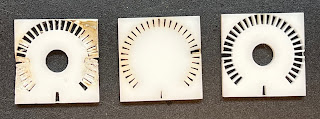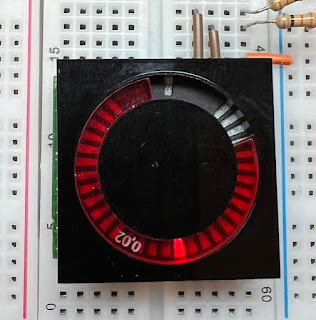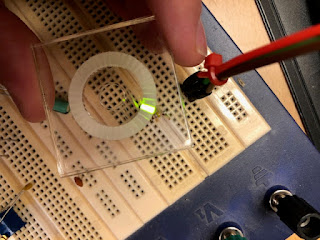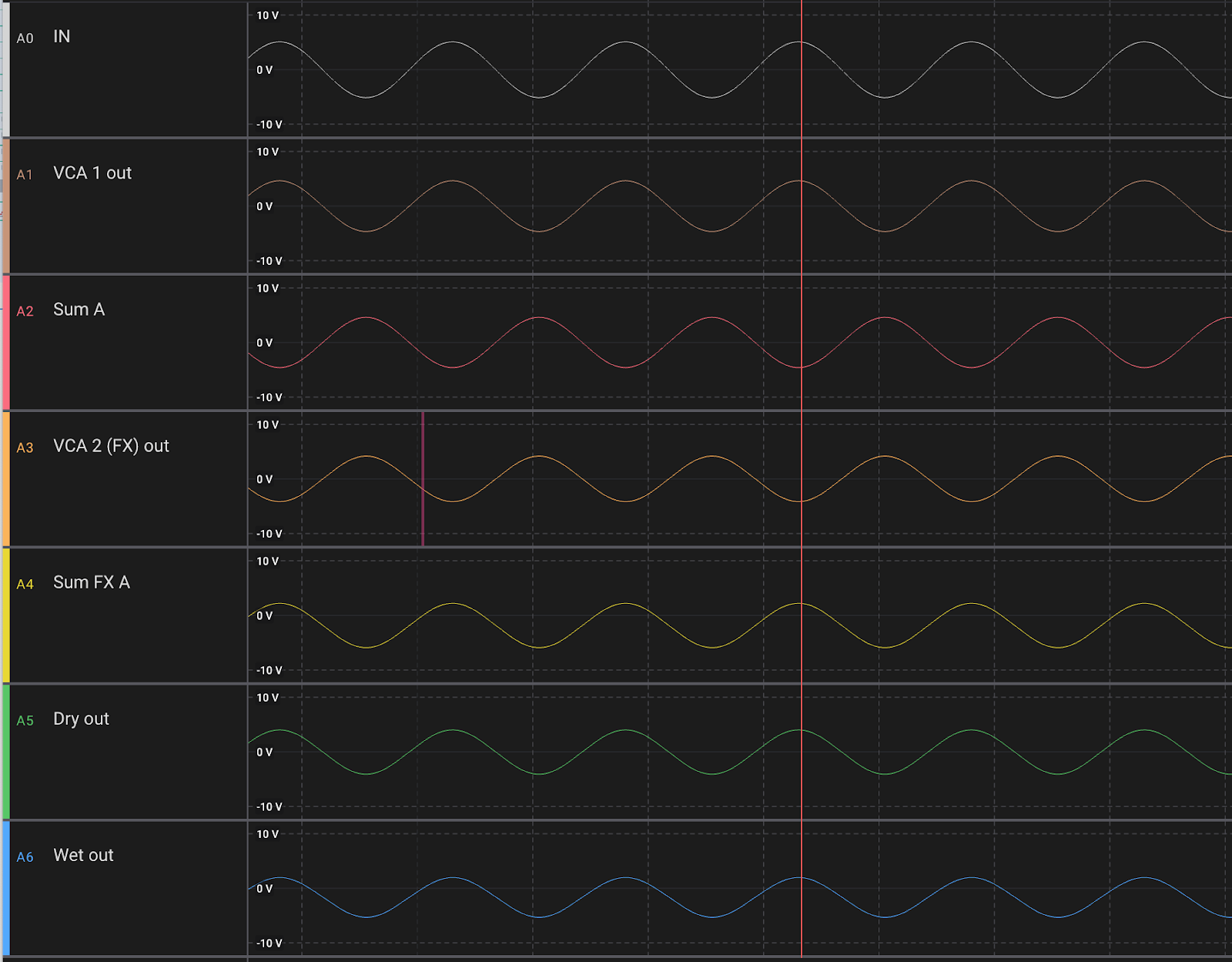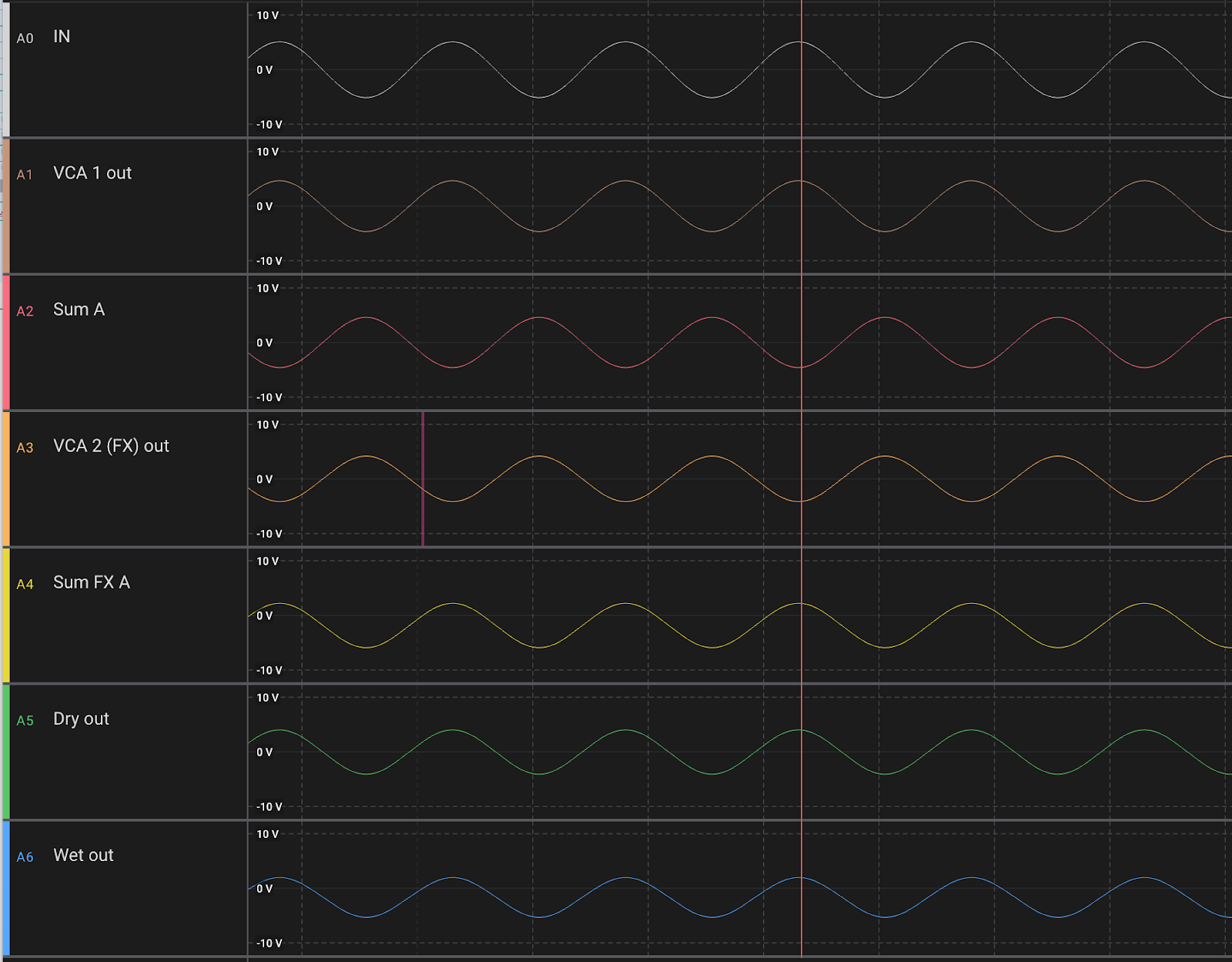Here is my initial design:
All VCAs are non-inverting and the bus summers are inverting.
These are the phases at various points
VCA 1 output: in phase, OK
Sum A: inverted: OK,
VCA 2: receives inverted input and outputs inverted, OK.
Sum FX A: in phase, OK
Dry out: inverted, OK
Wet out: in phase, OK
So all are as expected. But there's a problem! Dry and wet out are supposed to be mixed, but they are not in phase!
To fix this, we have two options
- Invert all input VCAs (but leave the wet/dry). That way, Sum A and Sum FX A are in phase
- Invert dry out VCA so bot dry and wet are in phase.
The first option is the more "correct", I just need to see if this works well.
Option 1:
VCA outputs are now inverted, but Sum A, Sum FX A, Wet and dry are in phase. This makes the module easier to think about as we don't need to know what is going on inside, phase in is always phase out.
Option 2:
Only Dry out VCA is changed (now inverts). Sum A is still inverted but now wet and dry are both in phase.
CV inputAs my CV is 0-5V, but the AS3364 wants 0-2V, I wanted to test if there was any difference between the CV responses when the CV was
1) a direct output from an op amp buffer (actually, a resistor divider tapped at it's center but then buffered with a non-inverting op amp)
2) tapped from the center of a resistor divider (0-5v connected to a 33k + 22k to gnd, effectively making the CV 0-2V)
I used a 0-5V triangle wave, buffered it twice and sent one to a resistor divider with an op amp buffer after it, connected to the CV input of one AS3364 cell, and the second to a resistor divider, tapped at the center and connected to the CV input of a second cell.
I then connected a 1.8V (150k + 27k between 12V and GND) to the signal inputs of the AS3364.
As I've seen earlier, the CV response is not completely linear, but I could see no difference between the two versions. My conclusion is thus that the unbuffered CV version is good enough.
CV Response
As on all the other AS3364 modules, I use a resistor divider (33k + 22k) to divide down 5V to 2V on the CV input.
I got curious about whether or not buffering this CV made any difference so I breadboarded both versions, turns out it does NOT make a difference meaning just two resistors without an op amp buffer works just fine.




